Tell us what you think about the new “This Day in History” videos ➡
On October 1, 1896, Rural Free Delivery was introduced in a handful of West Virginia towns. Rural free delivery made the mail faster, more convenient, and more valuable, bringing our nation together like never before.
During the 1800s, Americans in rural areas lived in great isolation. There were no telephones, radios, or televisions. Farmers and other country-dwelling Americans communicated by mail. However, getting to a post office to send and receive mail was difficult. Most people in rural areas only traveled to the post office once every few weeks. For the millions of families living on farms, miles from the nearest town and post office, mail was an occasional thing, a special event.
A group of influential Georgians, used to then-modern communications, hired their own private carrier who worked a scheduled route for more than 40 years. This Norwood, Georgia, carrier became the model and inspiration for the RFD plan introduced to Congress in 1893. While rural mail services were being tested in communities in 28 states in 1895, groups of 100 families were allowed to petition for future service.
The National Grange, an advocacy group for farmers and rural Americans, was also influential in the establishment of Rural Free Delivery. Milton Trusler, an Indiana farmer and president of his local Grange, began campaigning for the service as early as 1880. The National Grange supported his idea and helped to make Rural Free Delivery a reality.
President Grover Cleveland was hesitant about the expense of delivering mail to rural homes; in fact, he called it a “crazy scheme.” In 1895, Cleveland made William L. Wilson, who was in favor of free rural mail delivery, his postmaster general. Wilson established the first Rural Free Delivery services on October 1, 1896, in his home state of West Virginia in Charles Town, Halltown, and Uvilla. As the program proved successful, it expanded to other states. Rural Free Delivery revolutionized country living, allowing farmers to receive daily newspapers. It made the mail faster, more convenient, and more valuable. It brought our nation together like never before and stimulated the American economy. Rural Free Delivery quickly spread across the country.
The creation of Rural Free Delivery also led to the use of the Mail Wagon. The carriers who delivered mail to homes and businesses became a traveling post office where patrons could buy stamps, register their mail, and even purchase money orders. Trained horses could go between stops without much attention from the driver, leaving his hands free to sort and postmark mail. The mobile post offices of the early rural carriers opened the world to millions of Americans.

Soon after Rural Free Delivery was established, citizens began receiving catalogs from mail order companies like Sears, Roebuck and Co. These “wish books” contained pages and pages of goods that could not be accessed by half of America’s population. Up until 1913, parcels weighing more than four pounds were not carried by the US Post Office Department. These packages had to be transported by private express companies, whose rates were high, and service was unpredictable. Most companies only operated in the cities where business was more profitable. As a result, farmers and other rural residents found it difficult to access supplies, machinery repair parts, and equipment.
Farmers’ organizations like the Grange and these mail order companies lobbied Congress for a new service to reach these rural customers. On August 24, 1912, Congress addressed the need with a new law creating a Parcel Post service for fourth-class mail. Issued in 1913, Parcel Post stamps made mail order business more convenient. Rural farmers were finally able to receive food packages and ship out their own produce.
By 1901, rural routes served 1.8 million people; by 1920, most rural communities received postal service. RFD still plays a vital role in keeping rural people informed and connected through the delivery of letters, magazines, and newspapers. Today, 133,000 rural mail carriers deliver the mail on nearly 80,000 routes every day.
| FREE printable This Day in History album pages Download a PDF of today’s article. Get a binder or other supplies to create your This Day in History album. |
Discover what else happened on This Day in History.


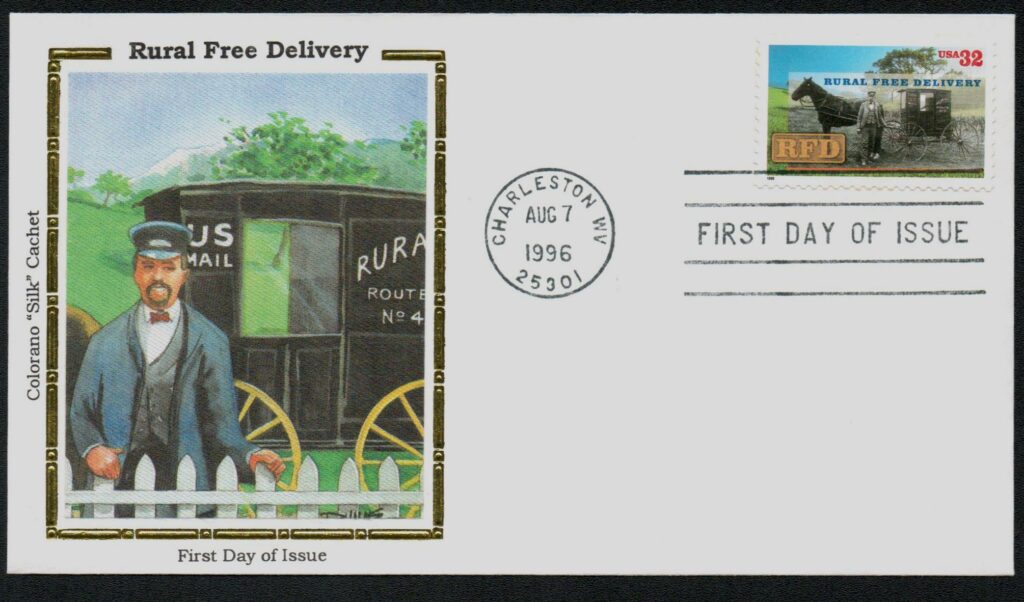
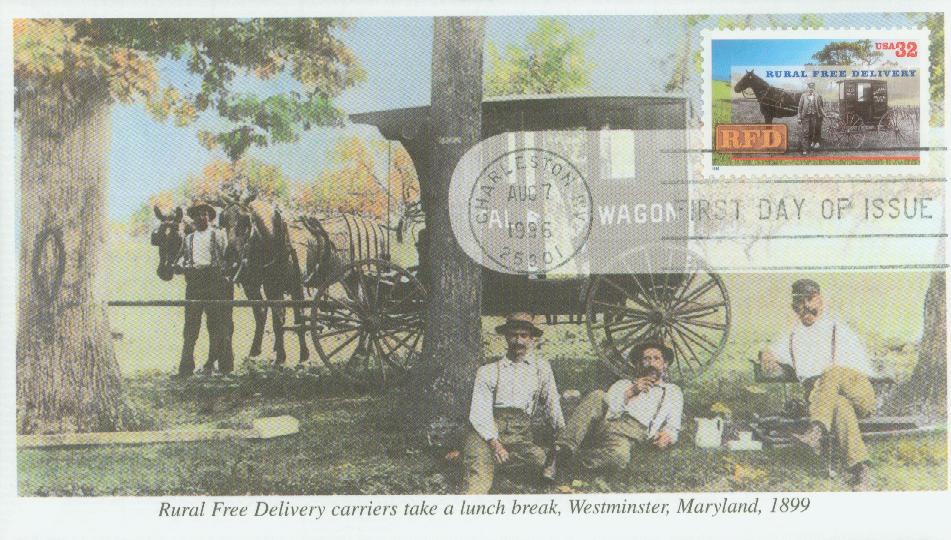

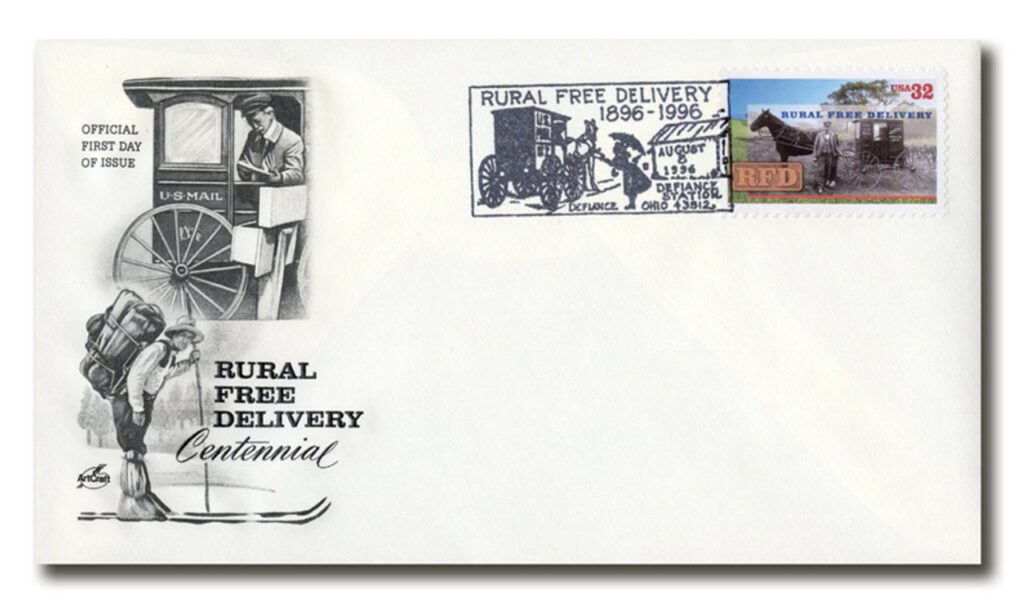
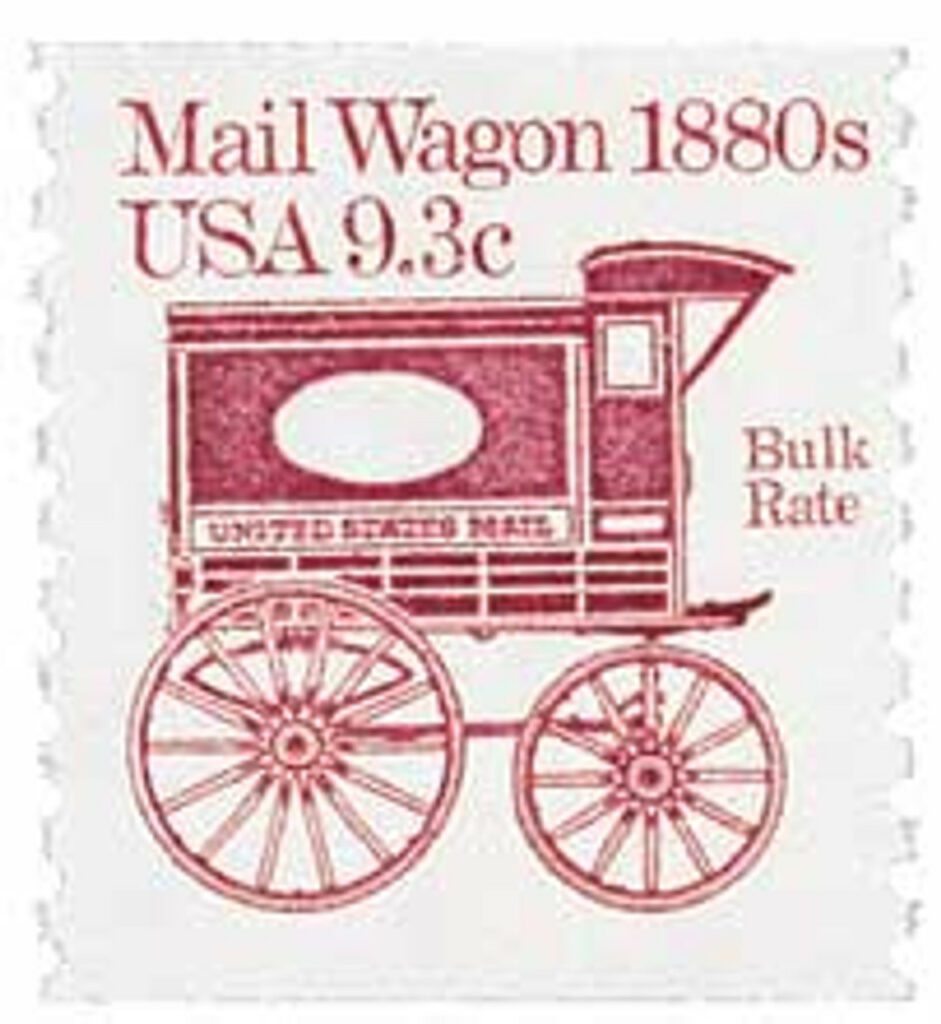

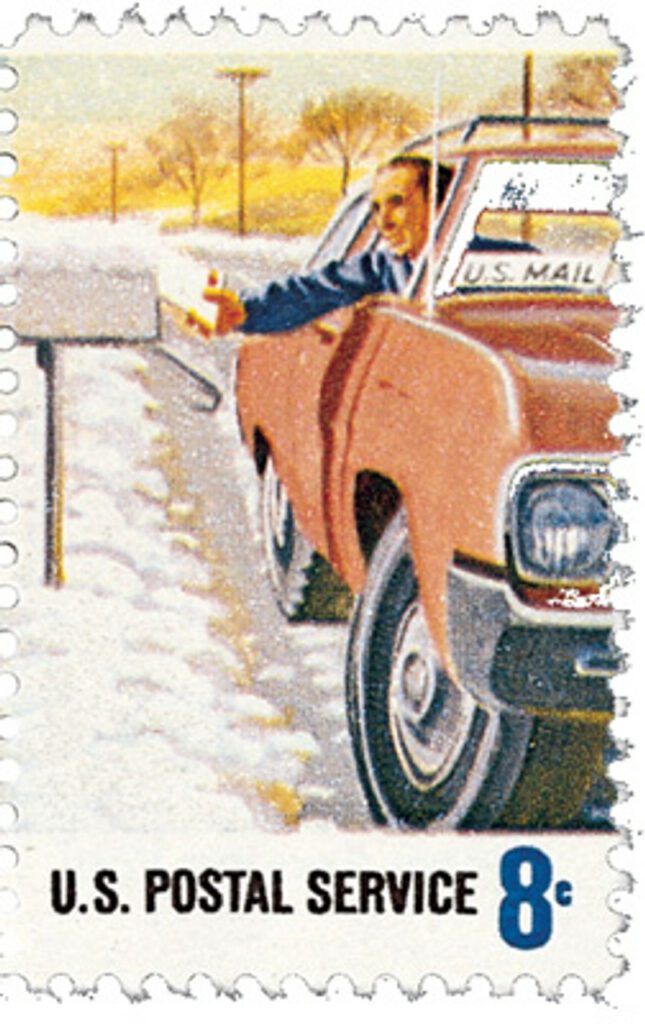
Very informative video – hundreds of years of amazing progress and services deliving the mail through out America and the World – great video – thanks 💖
Nice touch with that video !! Yet another first to help stamp collecting!
One thing I learned from post card collecting is that post cards were an early form of today’s emails. The mails moved relatively fast in those days. In cities, with multiple daily deliveries, a card mailed in the morning could reach its addressee in the afternoon. The problem with cards, however, was that anyone could read them–no privacy. I have one card written to a relative by his girlfriend. I noticed that the stamp was only partially licked at the top. Underneath the unlicked bottom portion was written “Miss You!”
This nice video helps me better understand the origin and purpose of my parcel post stamp colletction.
My grandmother’s brother was a RFD mail carrier in Marengo Il. in the early 1900’s and lived to be 92. His name was Lee Grover or uncle Lee to me.